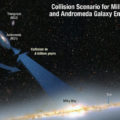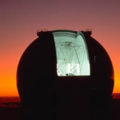
David Merritt, a professor of physics at the Rochester Institute of Technology (RIT), has just finished putting together one of the fastest supercomputers in the world. The new computer uses a novel architecture to reach speeds much higher than that of standard supercomputers of comparable size, and is the first ever designed specifically to study the evolution of star clusters and galaxies.
Merrit’s new supercomputer, known as the GravitySimulator, is designed to solve the “gravitational n-body problem” (how n bodies motions and interactions are resolved based on their initial positioning, mass and velocity). GravitySimulator simulates how a galaxy evolves as the stars move about each other in response to their own gravity. This computationally demanding task would normally require a tremendous amount of computer time, with standard supercomputers only able to achieve calculations of thousands-of-stars at a time.
Currently, Merritt and his team’s pet project involves studying the binary black hole problem – what happens when two galaxies collide and their central, super-massive black holes form a bound pair. “Eventually the two black holes are expected to merge into a single, larger black hole,” says Merritt. “But before that happens, they interact with the stars around them, ejecting some and swallowing others. We think we see the imprints of this process in nearby galaxies, but so far no one has carried out simulations with high enough precision to test the theory.” Closer to home, Merritt and his team would like to use GravitySimulator to study the dynamics of the central Milky Way Galaxy in order to understand the origin of our own galaxy’s black hole.











Comments are closed.